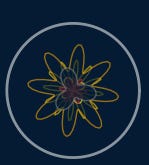The stars of the heavens are set for signs and for seasons. In light of this, I have set out on a journey of discovery. This video is a sample of a simulation I’ve been developing to map out the movements of the heavens.
Overview
The twelve signs of the zodiac lie in a circle around the solar system. In the center of the picture is a simulation of the planets. Note that the center of the system is Earth, but the planets rotate around the Sun. This simple adjustment of the Copernican model allows for simple elegantly accurate results. Each planet is scaled up for visibility, though still quite small. Saturn, the most distant planet included, sometimes moves outside the zodiac cycle.
Each sign of the zodiac has been displayed as its Western constellation and with two terms beneath. These terms are still preliminary but come from a first-order exploration of the cross-cultural themes behind each zodiac sign. Inspired by conversations about “The Gospel in the Stars” by Joseph Seiss (though I have yet to read the book beyond an initial skim), I lightly researched the constellations’ meanings and selected two terms to highlight each field of meaning.
Planetary Impact Exploration
The upper right-hand section of the screen shows a circle with several geometric shapes varying in it. Each shape corresponds to a planet. Each shape also appears in its corresponding constellation in the zodiac, but here they are superimposed to show the composite effect. As a planet approaches Earth, its shape grows and modulates slightly (see below). The closest period for each planet corresponds to their retrograde motion (moving backward across the sky). Thus, even without knowing the relative closeness of the planets, watching their behavior could clue a careful observer into the increased impact.
Each element’s shape is formed by a variation of a circle by a sine wave. There are meanings attached to each shape which demand a separate post for further exploration and refinement.
Planet key:
Sun: The circle of the sun is modulated by the moon’s impact, creating a flat-ended shape.
Moon: The tides are shown by the two sides of the lunar peanut.
Mercury: The messenger is displayed in a three-pointed shape. It rarely leaves the sun.
Venus: The opened pairing lunar form opens from a four-pointed flower.
Mars: The six-pointed star represents man, opening from the fold-over of twelve.
Jupiter: The renewed eight-point star waxes and wanes, never varying in form and ever ruling over the planets.
Saturn: The old and full twelve-point slowly travels the heavens, defining each year by its progression or retrograde motion.
The accuracy of the model is still a work in progress. The current program is running in Python with relatively few UI features.
Please comment if you have any suggestions or recommendations for further improvements in capability or accuracy.















